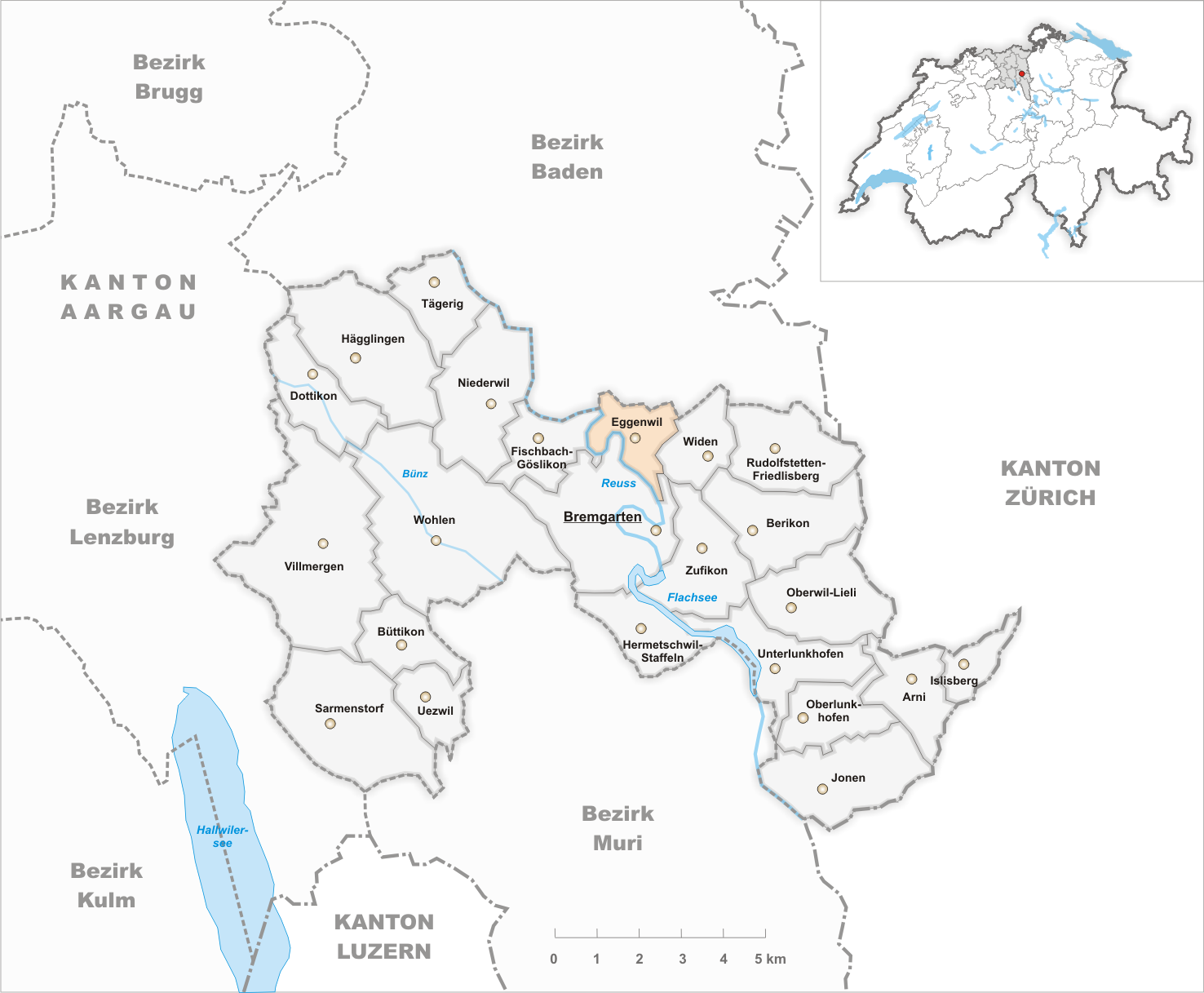|
Eggenwil
Eggenwil is a municipality in the district of Bremgarten in the canton of Aargau in Switzerland. History Eggenwil is first mentioned about 1160 as ''Egenwilare'' in a donation document, the ''Acta Murensia''. The village and church were given by Albert II, Count of Habsburg (died 1140) to Muri Abbey. However, the Habsburg rights of Low justice were given to the Hermetschwil abbey. In 1415 the canton of Aargau was taken from the Habsburgs by the Swiss Confederates. While Bern kept the southwest portion (Zofingen, Aarburg, Aarau, Lenzburg, and Brugg). Some districts, named the ''Freie Ämter'' or ''free bailiwicks'', with the County of Baden, were governed as "subject lands" by all or some of the Confederates. Part of Eggenwil was transferred to the ''Amt Hermetschwil'' of the ''Freie Ämter'', and the portions of the village north of the main road became part of the County of Baden. During the Helvetic Republic (1798–1803) Eggenwil and Widen formed a single muni ... [...More Info...] [...Related Items...] OR: [Wikipedia] [Google] [Baidu] |
Widen
Widen is a municipality in the district of Bremgarten in the canton of Aargau in Switzerland. History At the end of the 12th century a manor called "Wyda" is mentioned the first time, there's no exact year. "Widen", in the way like it's written today, appears the first time during the 14th century. In medieval times, the manor belonged to Habsburg. 1415 the Eidgenossen conquered the Aargau and Widen then belonged to the Grafschaft Baden. In March 1798 the French conquered Switzerland and proclamated the Helvetic Republic, in which Widen and Eggenwil formed one single municipality in the short-dated canton of Baden. After the foundation of the canton of Aargau 1803, Widen and Eggenwil were separated. Up to that time, there's not much known about Widen, because there are almost no documents left. During the 19th century Widen stayed a small village. Many poor inhabitants had to leave their homes and emigrated. The given up farms were freshly occupied by people from the canto ... [...More Info...] [...Related Items...] OR: [Wikipedia] [Google] [Baidu] |
Bremgarten (district)
Bremgarten District is a Swiss district in the Canton of Aargau, corresponding to the valleys of the Reuss and Bünz rivers in the area known as the ''Freiamt''. Geography Bremgarten District has an area, , of . Of this area, 48.7% is used for agricultural purposes, while 30.9% is forested. The rest of the land, (18.1%) is settled. Demographics Bremgarten District has a population of (as of ). , there were 2,402 homes with 1 or 2 persons in the household, 11,781 homes with 3 or 4 persons in the household, and 9,773 homes with 5 or more persons in the household. The average number of people per household was 2.43 individuals. there were 10,969 single family homes (or 37.2% of the total) out of a total of 29,488 homes and apartments.Statistical Department of Canton Aargau accessed 20 January 2010 There were a total of 479 em ... [...More Info...] [...Related Items...] OR: [Wikipedia] [Google] [Baidu] |
Bremgarten, Aargau
Bremgarten is a municipality in the Swiss canton of Aargau. It serves as seat of the district of Bremgarten. The medieval old town is listed as a heritage site of national significance. In 2013, Bremgarten was the first municipality in Europe to introduce laws forbidding asylum seekers from visiting certain public places such as libraries, swimming pools, schools and churches. On 1 January 2014 the former municipality of Hermetschwil-Staffeln merged into the municipality of Bremgarten.Nomenklaturen – Amtliches Gemeindeverzeichnis der Schweiz accessed 13 December 2014 History The area was known before 1140 as ''Bremgarten'', though the city wasn't founded until almost a century later. In 1230, a settlement was fo ...[...More Info...] [...Related Items...] OR: [Wikipedia] [Google] [Baidu] |
Fischbach-Göslikon
Fischbach-Göslikon is a municipality in the district of Bremgarten in the canton of Aargau in Switzerland. History While several, individual mesolithic items have been found in the municipality, the first evidence of a settlement are two Hallstatt era graves. The current village was founded in the Middle Ages. The medieval settlements of Fischbach and Göslikon are first mentioned in the first half of the 12th century as ''Visbach und Fischbach''. In 1159 it was mentioned as ''Cohelinchon'', and in 1179 as ''Cozlinchon''. The high and low justice lay with the Habsburgs, and then after 1415 with the Swiss. The monasteries of Hermetschwil and Gnadental as well as citizens and institutions of Bremgarten held property in both villages. The parish church was consecrated in 1048 and at least from 1159, it was in possession of Muri Abbey. In 1360 it came under the authority of the ''Spital Baden''. Between 1529-31 the Protestant Reformation entered Fischbach-Göslikon, ... [...More Info...] [...Related Items...] OR: [Wikipedia] [Google] [Baidu] |
Künten
Künten is a municipality in the district of Baden in the canton of Aargau in Switzerland. It lies on the Reuss River and includes the previously independent community of Sulz, which merged with Künten in 1973. History Künten is first mentioned around 1101-50 as ''Chünten'' though this comes from a 14th Century copy of the original document. Geography Künten has an area, , of . Of this area, 56.3% is used for agricultural purposes, while 26.9% is forested. Of the rest of the land, 12.7% is settled (buildings or roads) and the remainder (4.1%) is non-productive (rivers or lakes). The municipality is located in the Baden district. It consists of the village of Künten on the Bremgarten-Fislisbach road and the village of Sulz along the Reuss river valley. Coat of arms The blazon of the municipal coat of arms is ''Per pale Argent a Latin Cross pattee couped and Gules a Bend Wavy Argent.'' Demographics Künten has a population (as of ) of . , 13.7% of the population ... [...More Info...] [...Related Items...] OR: [Wikipedia] [Google] [Baidu] |




_restoracio_Fahr_152.jpg)